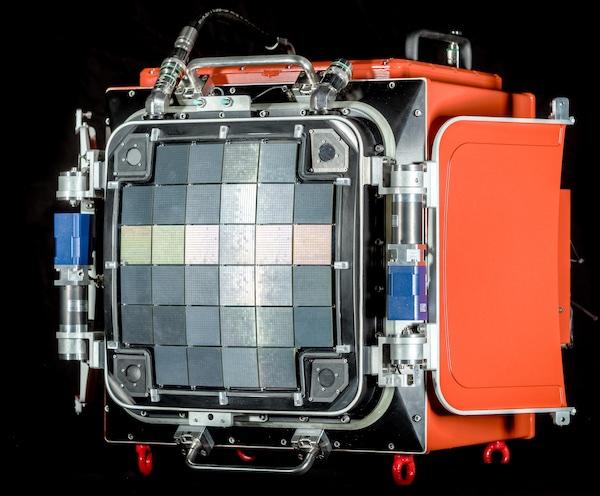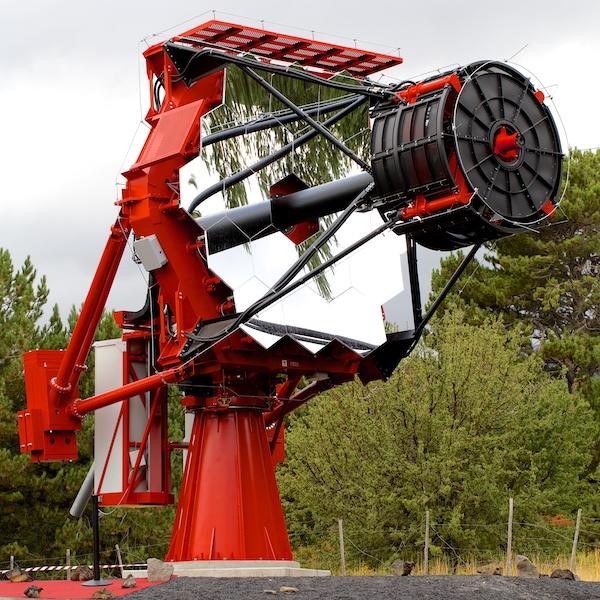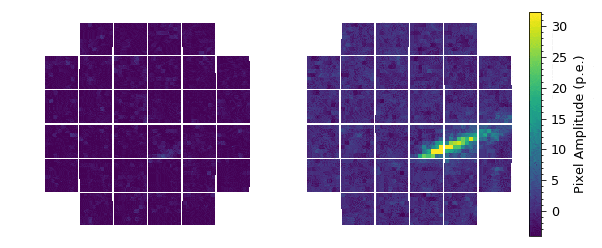A prototype focal-plane camera of the Small-sized Telescope of the Cherenkov Telescope Array project achieves its first light with silicon photosensors
[2019-06-28]
The gamma-ray group of the Cosmi-ray Research Division, led by Profs. Hiroyasu Tajima and Akira Okumura, has been developing the Small-sized Telescopes (SSTs) of the Cherenkov Telescope Array (CTA) project. In 2018 we completed prototyping a focal-plane camera of SSTs (CHEC-S), which uses the silicon photonsensor technology (SiPM), in an international collaboration (see Fig. 1).
We conducted test observation campaigns in May and July, 2019 to observe atmospheric Cherenkov radiation induced by very-high-energy cosmic rays with the prototype camera installed on an SST prototype telescope, ASTRI-Horn, located on Mt. Etna, Italy (Fig. 2). We successfully recorded Cherenkov flashes during these campaigns.


(left) Fig. 1. Prototype focal-plane camera for the CTA Small-sized Telescopes (Image credit : Christian Föhr, Max-Planck Institute for Nuclear Physics), (right)Fig. 2. ASTRI-Horn telescope
Fig. 3. shows some selected events of atmospheric Cherenkov images recorded in the campaigns. Very-high-energy cosmic rays and gamma rays create cascades of secondary particles (air showers) after entering the Earth's atmosphere, resulting in atmospheric Cherenkov radiation by charged particles in the air showers. The image shows Cherenkov emission recorded by our prototype camera with a frame speed of 1/1,000,000,000 sec (1 ns).

Fig. 3. Atmospheric Cherenkov images recorded by CHEC-S. (Left) Cherenkov flash animation with a frame speed of 1 ns, crossing the 9-deg field of view of the camera. (Right) Time integrated images.
The SSTs will cover the highest energy region (1300 TeV) of the whole CTA energy coverage ranging from 20 GeV to 300 TeV. In total 70 SSTs will be built for CTA to study the acceleration of Galactic cosmic rays by using very-high-energy gamma-ray observations.
